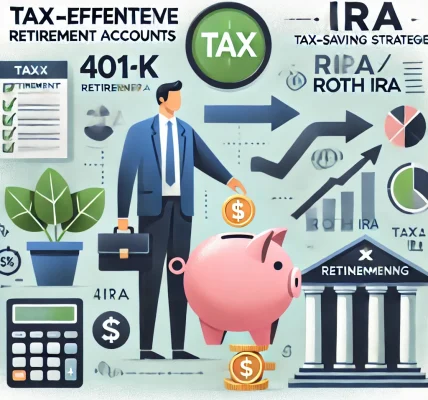Tax credits are one of the most effective ways to reduce your overall tax liability and maximize savings. Unlike tax deductions, which lower your taxable income, tax credits directly reduce the amount of tax you owe, offering a dollar-for-dollar reduction. Understanding how to leverage tax credits can help you legally optimize your tax savings and retain more of your hard-earned money. This guide explores various tax credits, eligibility criteria, and strategies to maximize their benefits.
1. Understanding the Difference Between Tax Credits and Deductions
Many taxpayers confuse tax credits with deductions, but they function differently:
- Tax Deductions lower your taxable income, reducing the amount of income subject to tax.
- Tax Credits provide a direct reduction in the amount of taxes owed.
For example, if you owe $5,000 in taxes and qualify for a $1,500 tax credit, your new tax liability is $3,500.
Types of Tax Credits:
Tax credits are broadly categorized into:
- Refundable Tax Credits: If the credit exceeds the tax owed, you receive the excess as a refund.
- Non-Refundable Tax Credits: These can only reduce your tax liability to zero but won’t generate a refund.
2. Common Tax Credits to Maximize Savings
a) Earned Income Tax Credit (EITC)
The Earned Income Tax Credit (EITC) is designed to help low- to moderate-income earners by providing a refundable credit. Eligibility depends on:
- Income level (varies by filing status and number of dependents).
- Having earned income (e.g., wages, salary, or freelance income).
- Filing as single, married filing jointly, or head of household.
For 2024, the maximum EITC can be up to $7,430 for those with three or more qualifying children.
b) Child Tax Credit (CTC)
Parents or legal guardians of children under 17 may claim the Child Tax Credit, which:
- Offers up to $2,000 per qualifying child.
- Is partially refundable (up to $1,600 per child in 2024).
- Phases out at higher income levels ($200,000 for single filers and $400,000 for joint filers).
c) American Opportunity Tax Credit (AOTC)
Students pursuing higher education may qualify for the AOTC, which provides:
- A credit of up to $2,500 per eligible student.
- 100% of the first $2,000 of qualified education expenses and 25% of the next $2,000.
- Refundability of up to 40% ($1,000 maximum refund).
d) Lifetime Learning Credit (LLC)
Unlike the AOTC, the Lifetime Learning Credit helps individuals pursuing continued education or career development:
- Offers 20% of the first $10,000 in qualified education expenses (maximum $2,000 per tax return).
- Has no limit on the number of years it can be claimed.
- Phases out at higher income levels.
e) Saver’s Credit (Retirement Savings Contribution Credit)
The Saver’s Credit is designed to encourage low- and middle-income individuals to save for retirement:
- Provides a credit of up to 50% of contributions to an IRA, 401(k), or other retirement plan.
- Maximum credit: $1,000 for single filers and $2,000 for joint filers.
- Income limits apply; the lower your income, the higher the percentage of credit.
f) Child and Dependent Care Credit
For taxpayers who incur expenses for child or dependent care while working or looking for work:
- Provides a credit of 20% to 35% of qualified expenses up to $3,000 per dependent (or $6,000 for two or more dependents).
- Available regardless of income, but higher-income earners receive a lower percentage.
g) Energy-Efficient Home Improvement Tax Credits
Homeowners investing in energy-efficient upgrades may qualify for:
- Residential Clean Energy Credit (30% credit on solar panels, wind turbines, and geothermal systems).
- Energy Efficient Home Improvement Credit (up to $3,200 for insulation, windows, doors, and HVAC systems).
h) Electric Vehicle (EV) Tax Credit
Purchasing a qualifying electric vehicle (EV) can make you eligible for a credit up to $7,500, depending on the make, model, and manufacturing requirements.
3. Strategies to Maximize Tax Credit Benefits
a) Keep Accurate Financial Records
To ensure you qualify for tax credits:
- Maintain receipts and invoices for eligible expenses.
- Track income to determine eligibility for income-based credits.
- Store documents electronically for easy access during tax filing.
b) Utilize Tax Credits in Combination
If eligible, you can claim multiple credits in the same tax year. For example:
- Parents can claim both the Child Tax Credit and the Child and Dependent Care Credit.
- Students may qualify for both the AOTC and Saver’s Credit if they contribute to a retirement account.
c) Time Major Purchases Strategically
- Delay large education expenses to maximize the AOTC.
- Make energy-efficient home improvements in years when tax credits apply.
- Purchase an electric vehicle when the EV Tax Credit eligibility is highest.
d) File Taxes on Time and Electronically
- Filing electronically reduces errors and ensures faster refunds.
- Claim all eligible credits to minimize tax liability.
- Use tax software like TurboTax, H&R Block, or TaxAct to identify potential credits.
e) Consult a Tax Professional
Some tax credits have specific eligibility rules and phase-out limits. A Certified Public Accountant (CPA) or tax advisor can:
- Maximize credits based on your income and financial situation.
- Help with complex tax returns (especially for self-employed individuals).
- Ensure compliance with IRS regulations to avoid penalties.
4. Avoiding Common Mistakes When Claiming Tax Credits
- Missing out on refundable credits: Many taxpayers overlook the Earned Income Tax Credit (EITC), which can provide a refund even if no taxes are owed.
- Incorrectly claiming dependents: Ensure your dependents meet IRS eligibility criteria for credits like the Child Tax Credit.
- Not keeping documentation: The IRS may request proof for expenses related to education, child care, or energy efficiency upgrades.
- Ignoring phase-out limits: Some tax credits gradually phase out at higher income levels, so plan accordingly.
Conclusion
Tax credits are a powerful tool to legally reduce tax liabilities and maximize savings. By understanding available credits, maintaining accurate records, strategically timing purchases, and seeking professional guidance, taxpayers can optimize their financial benefits. Whether you’re a parent, student, homeowner, or low-income worker, leveraging tax credits effectively can help you retain more money while staying fully compliant with tax laws.




